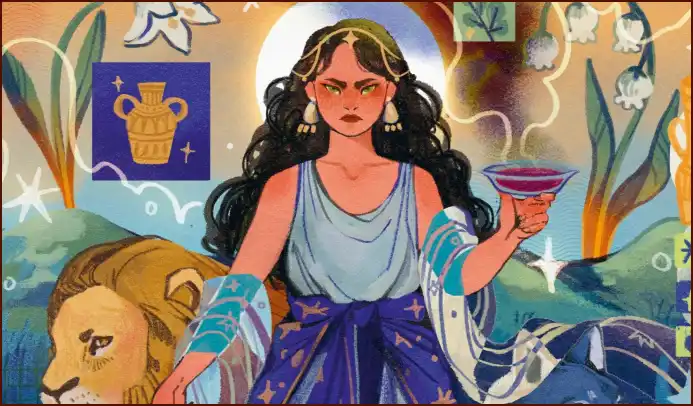A central figure in many modern and historical witchcraft traditions is the Horned God. This powerful and often misunderstood deity represents the masculine, wild, and untamed forces of nature, embodying fertility, death, and rebirth.
Table of Contents
Far from the demonic figure he was later portrayed as by Christian authorities, the Horned God is a pre-Christian archetype with deep roots in ancient European paganism. He is the lord of the hunt, the master of the wilderness, and the consort of the Great Goddess. His horns symbolize not evil, but virility, power, and his connection to the animal kingdom.
🦌 Ancient Origins and Archetypes
The archetype of a horned deity is one of the oldest in human spirituality, appearing in various cultures across the ancient world. These figures were often associated with the wilderness, animals, and the cycle of the hunt. The Horned God of modern witchcraft draws inspiration from several of these ancient gods.
Some of the most significant influences include:
- Cernunnos: A Celtic god often depicted with the antlers of a stag, seated in a lotus position and surrounded by animals. He is interpreted as a lord of animals, wealth, and the underworld.
- Pan: The Greek god of the wild, shepherds, and flocks. With the legs and horns of a goat, Pan was a rustic and lustful deity who embodied the untamed spirit of nature.
- Dionysus: The Greek god of wine, ecstasy, and ritual madness. He represented the intoxicating and liberating forces of nature that dissolve ordinary consciousness.
Cycle of the Seasons
In many Wiccan traditions, the Horned God’s life cycle is tied to the changing of the seasons, as represented in the Wheel of the Year. He is born at the winter solstice (Yule), grows in strength through the spring, marries the Goddess at Beltane, and then dies at the harvest festivals, only to be reborn again. This cycle mirrors the life of the sun and the natural rhythms of death and rebirth in the agricultural year. He is a symbol of the ever-renewing vitality of the natural world.
👹 The Demonization of a Pagan God
During the medieval and early modern periods, the Christian Church actively sought to suppress pagan beliefs. In doing so, it began to associate the horned pagan gods with the figure of the Devil. The familiar imagery of Satan, with horns and goat-like features, was largely a deliberate appropriation of the iconography of gods like Pan and Cernunnos.
This act of propaganda was a key element in the persecution of accused witches. By recasting the Horned God as the Devil, the Church was able to portray witchcraft not as a nature-based folk religion, but as a malevolent, satanic cult, thus justifying the brutal witch hunts.
—
Atkinson, Hazel. The Extraordinary History of Witches. 2025.
More Topics
- Curses: The History of the Evil Eye and Binding Magic
- Magical Plants: A Witch’s Garden of Herbs and Poisons
- Roman Magic: Curses, the Strix, and Everyday Protection
- Circe: The Greek Sorceress of Transformation and Myth
- Greek Magic: Hecate’s Power, Oracles, and Enchantresses
- Japanese Magic: Yōkai, Onmyōdō, and Supernatural Folklore
- Empress Chen Jiao: The Royal Scandal of Witchcraft in Han China

